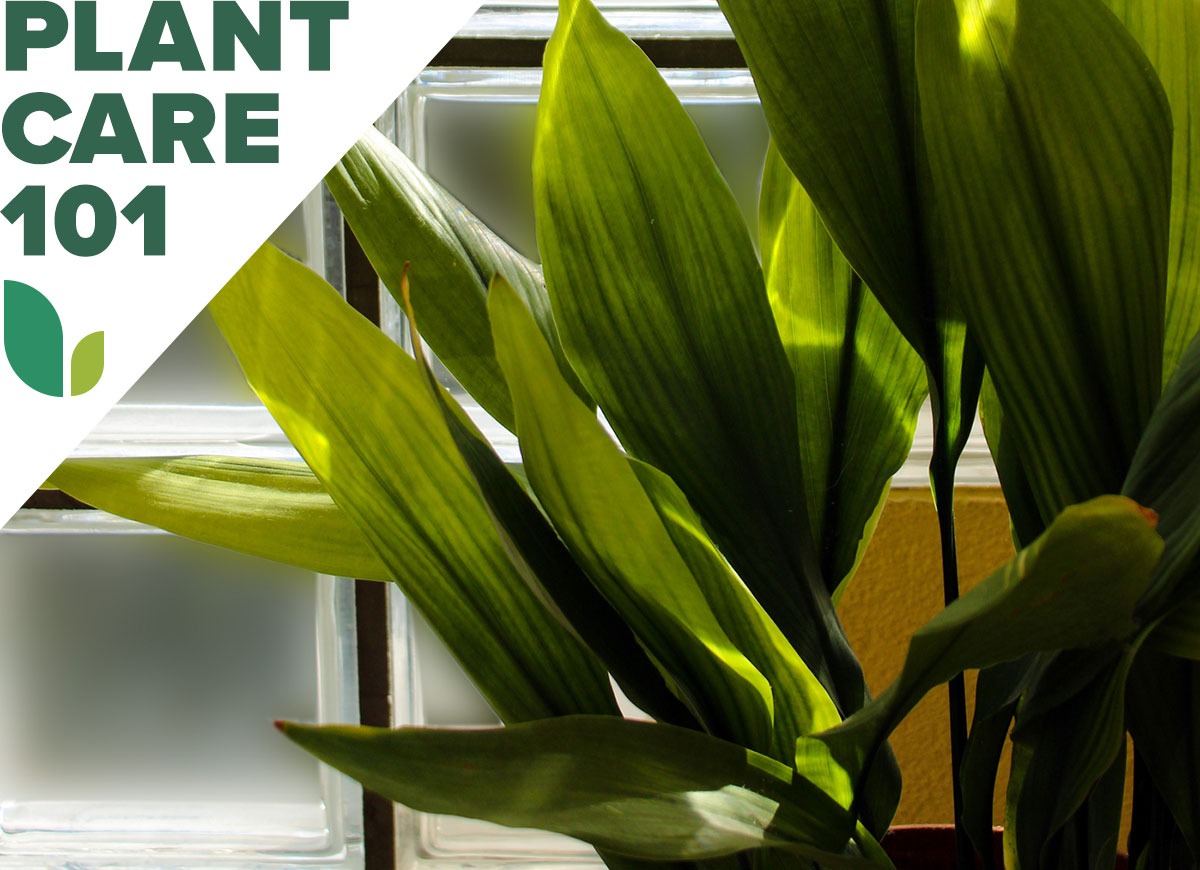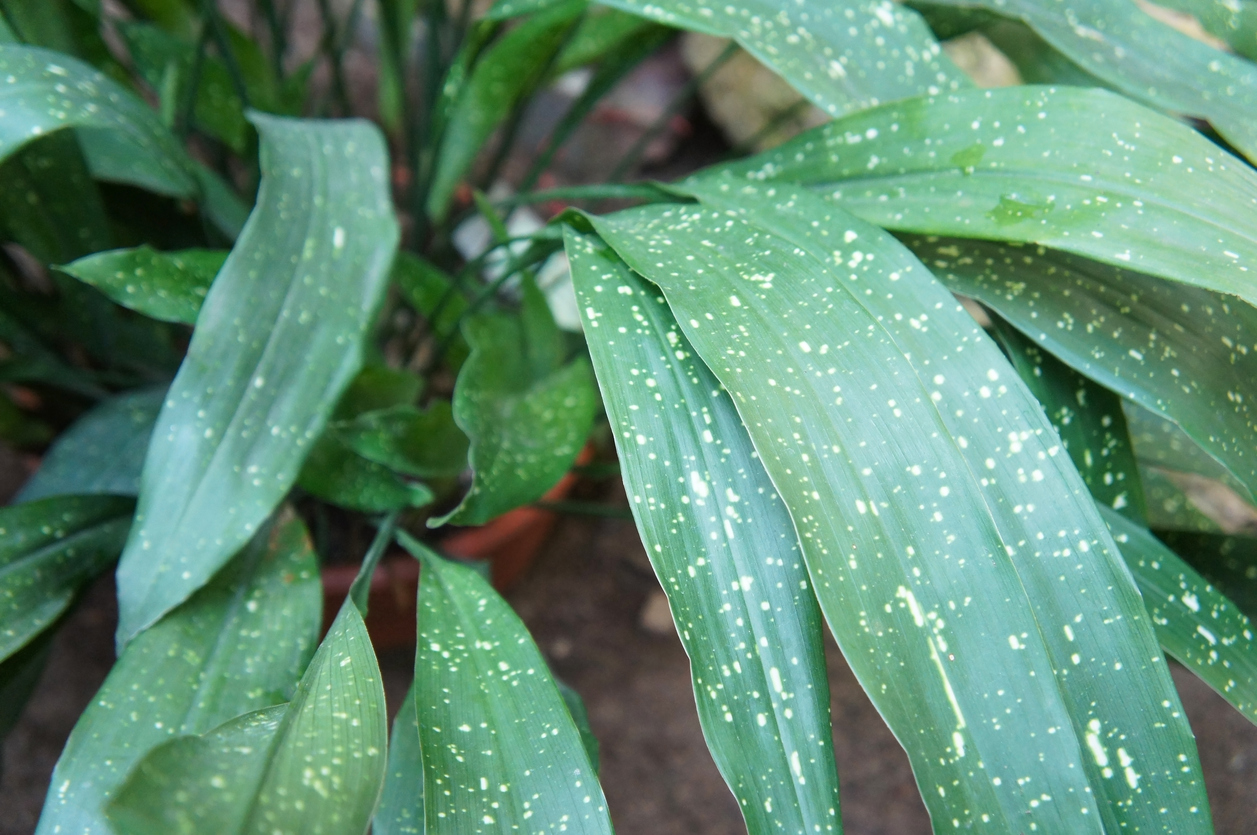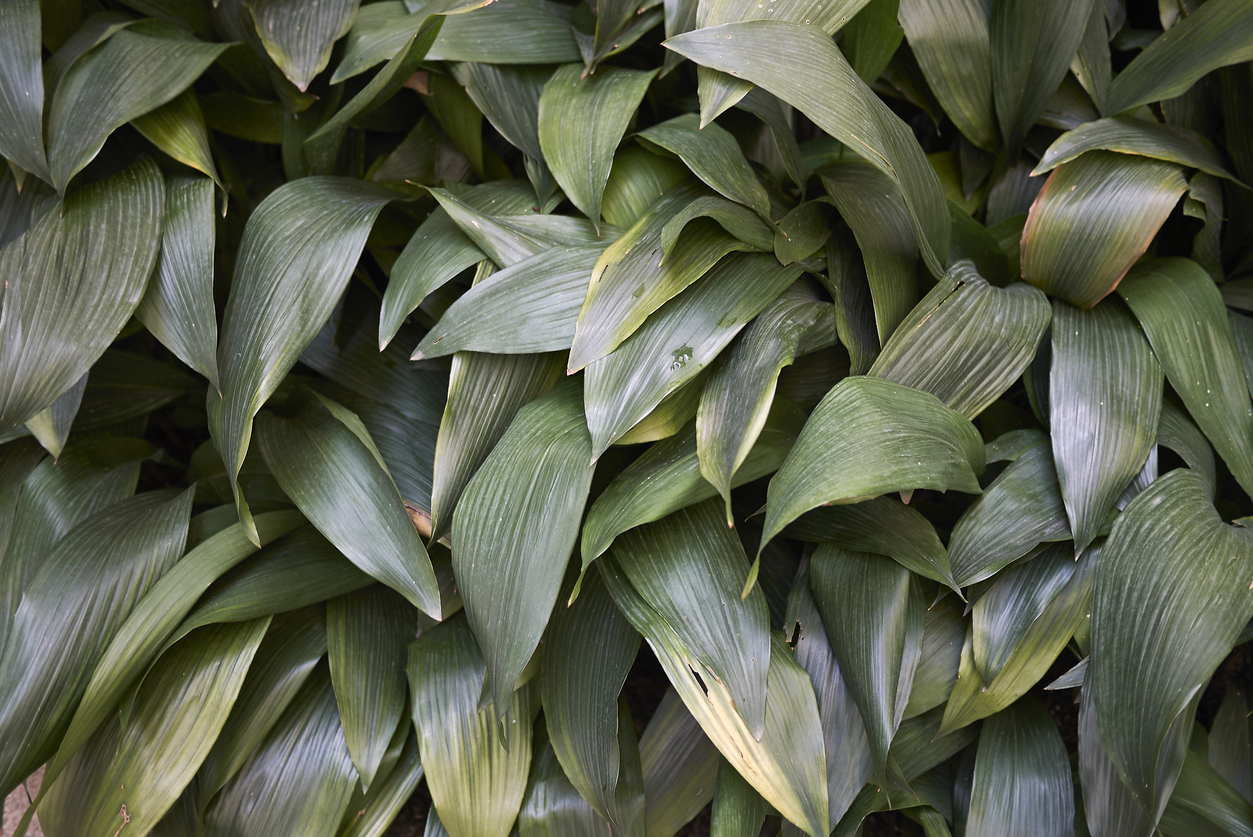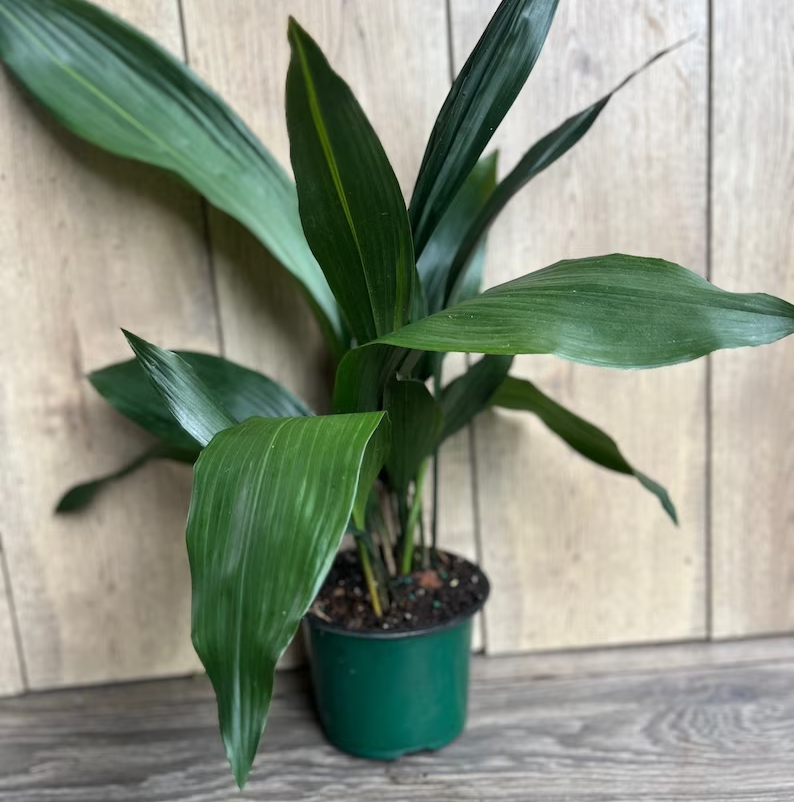

We may earn revenue from the products available on this page and participate in affiliate programs. Learn More ›
As Tovah Martin notes in The Indestructible Houseplant, easy-to-grow aspidistras—aka cast iron plant—were so popular during the early 20th century that “they were a hackneyed symbol for all that was banal in the status quo.” Now that they have become less commonly used even as more variegated species are available, she concludes, “aspidistras have a certain cachet,” not to mention a high tolerance for neglect, making them perfect for novice gardeners. In fact, cast iron plant is also known as barroom plant for its ability to survive dim and smoky interiors, which definitely lowers the bar when it comes to cast iron plant care!
Cast Iron Plant Care at a Glance
Common Name: Cast iron plant, barroom plant
Scientific Name: Aspidistra elatior
Soil: Standard potting mix for containers; rich, fertile soil in the landscape
Light: Low to moderate, no sun
Water: Moist in summer, dryer in winter
Food: Balanced houseplant fertilizer
Temperature and Humidity: 45-85 degrees, average humidity
Propagation: Division
Safety: Non-toxic
Cast Iron Plant Characteristics
Native to the forests of Japan and Taiwan, Aspidistra elatior cultivars vary in mature height from 2 to 3 feet. The clumping plants feature glossy lance-like leaves that arise directly from underground rhizomes.
The cast iron plant flower is waxy, cup-shaped, purple or brown in color, and appears at ground level between mid-winter and mid-spring. However, cast iron houseplants aren’t as likely to flower as outdoor specimens are. Although the plants remain evergreen indoors—and outdoors in mild climates, they may die back to the ground if subjected to temperatures colder than 20 degrees Fahrenheit. However, they should resprout in spring where they are hardy.
If you are wondering whether you can grow cast iron plant outdoors, keep in mind that it thrives in shady conditions similar to those favored by hostas. Many cast iron varieties and cultivars will do well in USDA Zones 7 through 11, but some types are hardy only to Zone 8 or 9.
The cast iron plant is not toxic for pets or people.
RELATED: 20 Low-Light Houseplants You Can Grow Practically Anywhere
Types of Cast Iron Plants

- ‘Asahi’: This cultivar’s name means “sunrise” or “morning sun.” Its 30-inch-long and 5- inch-wide leaves are splashed with white on the upper third of each one.
- ‘Ginga Giant’: Its leaves growing 2 feet long and 4 inches wide and its name translating to “galaxy” or “Milky Way,” this “giant” is one of the speckled cast iron plant varieties. Its yellow “stars” sparkle against a green background.
- ‘Ippin’: Its leaves are also 2 feet long but vary in width from 1 to 3 inches, and its name means “gem” or “article of rare beauty.” This variegated cast iron plant offers green foliage heavily striped with cream and white.
Selecting Soil for Cast Iron Plants
For container-grown cast iron plant, choose a potting mix with humus or compost included to mimic the conditions of the forest floor where the plant originated. However, The New Sunset Western Garden Book edited by Kathleen Norris Brenzel advises that “too-rich” container soil may cause variegated cultivars to revert to green. Make sure the plant’s pot has drainage holes to prevent rotting of the rhizomes from a buildup of water.
If you are planting cast iron plants in the ground outdoors, be careful to avoid salty soils or highly alkaline ones. Those, according to Arizona State University, can cause “foliar necrosis and eventual plant death.” But do put cast iron plants in organic, fertile soil.
The Right Light
Place your indoor cast iron plant near an unshaded, north-facing window or back far enough from other windows that it doesn’t receive any direct sunlight except the dappled type. If its foliage begins to look bleached, it is suffering from too many rays.
Outdoors, install cast iron plant in shady areas, bearing in mind that variegated cultivars will need bright, indirect light to preserve their variegation. And, as the University of Florida notes, “Even the ‘low light’ plants…will grow faster at higher light levels.”
Watering Cast Iron Plants
Keep the soil of your cast iron plant lightly moist during the seasons when it is actively growing—usually late spring until early fall. Allow that soil to dry out to an inch below the surface before you rewater the plant at other times of the year.
If its leaves develop brown tips, you probably are allowing it to dry out too much, while yellow leaves may indicate that the plant’s soil is too wet, and its rhizomes are beginning to rot. A cast iron plant drooping also can indicate either underwatering or root rot, since the symptoms are similar in both cases. To determine which problem you have, you may want to consult our article on identifying root rot in houseplants.
RELATED: 16 Houseplants That Are Safe for Cats
Fertilizing Cast Iron Plants

Since you want to avoid a buildup of salts in its soil and the plant doesn’t require heavy feeding, fertilize your potted cast iron plant only about once a month during the time that it is growing. Use a balanced fertilizer for indoor plants at half the strength recommended in the directions.
If you prefer, you can make a single application of a slow-release organic fertilizer to the plant’s soil in spring instead. Once it stops growing in autumn, cease feeding it until the following spring. You can help your houseplant survive the winter by not overindulging it then. Excess fertilizer may cause yellowing of aspidistra’s leaves or slits between the veins on those leaves.
Provided they are planted in a rich soil, outdoors cast iron plants shouldn’t need fertilizing, but an all-purpose fertilizer applied in spring won’t hurt if you question your soil’s fertility.
Setting the Temperature and Humidity
One of the best houseplants for less-than-ideal conditions, the cast iron plant is not picky about either heat or humidity and will tolerate any temperatures between 45 and 85 degrees. However, you will have to be careful not to overwater plants kept at cool temperatures since they will be more prone to rotting of their rhizomes.
Since aspidistra can develop spider mites if kept too dry, it’s a good idea to wash off its leaves frequently with a damp cloth—cleaning both the top and bottom surfaces thoroughly. You’ll also want to mist the plant frequently, so it won’t develop the dusty look it once was infamous for!

Propagating Cast Iron Plants
Because seeds of aspidistra seldom are available, the plant generally is propagated by division. Since it grows slowly, it should only require dividing about once every 5 years when it has filled up its container.
To begin that process, which is best done in early spring, first water your plant. Then remove it from its pot and separate it into two sections by pulling the rhizomes apart, leaving at least three or four leaves on each section. Give each of those sections its own pot, filled with fresh potting mix, preferably an 8- to 12-inch diameter one so the plant won’t need dividing again for a while.
RELATED: The 9 Best Houseplants for the Kitchen
Potential Pests and Diseases
Although an indoor cast iron plant will tolerate underwatering and low humidity better than most houseplants, such stress may cause it to become infested with spider mites, often indicated by yellowing leaf tips. If you see what looks like webbing on the undersides of the affected leaves, shake one of them over a white sheet of paper. Should you observe miniscule dots moving about on that paper, you can conclude that you have mites.
In The Complete Houseplant Survival Manual, Barbara Pleasant suggests that you cut off and dispose of the most badly infested leaves, sealing them up in a plastic bag before you toss them in the trash. Then spray your plant thoroughly with insecticidal soap, following the directions on its packaging and repeating the treatment 5 days later. Pleasant cautions that you should avoid oil sprays as they can cause discoloration of aspidistra leaves.
Looking for more beginner-friendly plants? Check out our guides on caring for aloe vera, peace lily, and snake plant.
